Since the birth of the Universe, the following is the GREATEST Scientific Breakthrough Ever………
By Andres Agostini
www.AgostiniNews.blogspot.com
Since History Invention, The Most Important Scientific Canonical Landmark in Humankind’s History…Andy is celebrating a big feast on this
Unprecedented inflection point. Wednesday, September 10, 2008.

CERN,


Scientists applaud during the switch on operation of the Large Hadron Collider.
The Large Hadron Collider -- a $9 billion particle accelerator designed to simulate conditions of the Big Bang that created the physical Universe -- was switched on at 0732 GMT to cheers and applause from experts gathered to witness the event.
While observers were left nonplussed by the anticlimactic flashing dots on a TV screen that signalled the machine's successful test

run, among teams of scientists involved around the world there were jubilant celebrations and popping champagne corks.
In the coming months, the collider is expected to begin smashing particles into each other by sending two beams of protons around the tunnel in opposite directions.
Skeptics, who claim that the experiment could lead to the creation of a black hole capable of swallowing the planet, failed in a legal bid to halt the project at CERN, the European Organization for Nuclear Research.

Others have branded it a colossal waste of cash, draining resources from its multinational collaborators that could have been spent on scientific research with more tangible benefits to mankind.
Sound off: What do you think of the experiment?
French President Nicolas Sarkozy hailed the project as a major achievement for
"The repercussions of this scientific investment without precedent in the history of humanity will be essential not only for the intimate knowledge of our universe, but also for the direct applications in fields as varied as intensive calculation or even  medicine," he said.
medicine," he said. ![]()
The collider will operate at higher energies and intensities in the next year, potentially generating enough data to make a discovery by 2009, experts say.
Don't Miss
They say the experiment has the potential to confirm theories that physicists have been working on for decades including the possible existence of extra dimensions. They also hope to find a theoretical particle called the Higgs boson -- sometimes referred to as the "God particle," which has never been detected, but would help explain why matter has mass.
The collider will recreate the conditions of less than a millionth of a second after the Big Bang, when there was a hot "soup" of tiny particles called quarks and gluons, to look at how the universe evolved, said John Harris,
Since this is exploratory science, the collider may uncover surprises that contradict prevailing theories, but which are just as interesting, said Joseph Lykken, theoretical physicist at the Fermi National Accelerator Laboratory.
 "When
"When
Don't Miss
- Blog: Countdown to confusion
- Atom-collider is a YouTube smash
- Blog: Flip it baby
- TIME.com: Collider triggers end-of-world fears
- Colliding with nature's best-kept secrets
Why should the layperson care about this particular exploration? Years ago, when electrons were first identified, no one knew what they were good for, but they have since transformed our entire economy, said Howard Gordon, deputy research program manager for the collider's ATLAS experiment.
"The transformative effect of this research will be to understand the world we live in much better," said Gordon, at Brookhaven National Laboratory. "It's important for just who we are, what we are."
Fears have emerged that the collider could produce black holes that could suck up anything around them -- including the whole  Earth. Such fears prompted legal actions in the
Earth. Such fears prompted legal actions in the
Although physicists acknowledge that the collider could, in theory, create small black holes, they say they do not pose any risk. A study released Friday by CERN scientists explains that any black hole created would be tiny, and would not have enough energy to stick around very long before dissolving. Five collider collaborators who did not pen the report independently told CNN there would be no danger from potential black holes.
![]()
John Huth, who works on the collider's ATLAS experiment, called such fears "baloney" in a recent interview, and noted that in normal physics, even if the black hole were stable, it could just pass through the Earth without being detected or without interacting at all.
"The gravitational force is so weak that you'd have to wait many, many, many, many, many lifetimes of the universe before one of these things could [get] big enough to even get close to being a problem," said Huth, professor of physics at Harvard University.
 Cern atom smasher set in motion
Cern atom smasher set in motion
By Frances Williams in
Published: September 10 2008 07:32 | Last updated: September 10 2008 16:57
The world’s most powerful atom smasher was set in motion for the first time on Wednesday, marking the launch of a 20-year experiment designed to unlock the secrets of the universe.
Thunderous applause greeted the first complete circuit of a beam of protons – hydrogen nuclei – at close to the speed of light around a 27km tunnel built deep under
 “It’s a fantastic moment,” said Lyn Evans, leader of the $8bn (€5.7bn, £4.5bn) project who has been involved from its beginnings a quarter-century ago. “We can now look forward to a new era of understanding about the origins and evolution of the universe.”
“It’s a fantastic moment,” said Lyn Evans, leader of the $8bn (€5.7bn, £4.5bn) project who has been involved from its beginnings a quarter-century ago. “We can now look forward to a new era of understanding about the origins and evolution of the universe.”
Among the early goals of scientists at the European Organisation for Nuclear Research, known by its French acronym Cern, are an explanation of the mechanism that generates mass, and investigation of the mysterious “dark matter” that makes up a quarter of the universe. After some “small electrical problems” overnight, the start-up of the Large Hadron Collider went without a hitch, as the beam was propelled around the circuit by giant superconducting magnets cooled to a temperature colder than outer space. A few hours later a beam was sent in the opposite direction.
The packed control room erupted in cheers and whistles as two glowing balls of light briefly appeared on the crucial monitoring screen, signalling the successful circuit of the first beam.
Over the next few weeks, Cern’s scientists and engineers will make the final adjustments needed to collide two opposing beams, each finer than a human hair. By smashing the proton beams  together, they plan to recreate at sub-atomic level the intense energies a millionth of a second after the “Big Bang” that gave birth to our universe 14bn years ago.
together, they plan to recreate at sub-atomic level the intense energies a millionth of a second after the “Big Bang” that gave birth to our universe 14bn years ago.
Cathedral-sized detectors have been built to capture the traces of any new elements of matter that emerge from those collisions, putting existing theories to the test and perhaps revealing new forces or hidden dimensions of space and time.
EDITOR’S CHOICE
Slideshow: Cern’s Large Hadron Collider goes live - Sep-10
Editorial Comment: Collision course - Sep-10
Scientists look to the spin-offs of a miniature ‘big bang’ - Sep-04
“The LHC is a discovery machine. We don’t know what we’ll find,” says Abraham Seiden, professor of physics and director of the Santa Cruz Institute for Particle Physics at the
The
 Cern said new scientific results could start to appear in a year’s time. The LHC’s first task will be to find the Higgs Boson, a particle first postulated more than 40 years ago by Peter Higgs, a British physicist, as giving mass to matter. Prof Higgs said earlier this year he was hoping to receive confirmation of his theory by the time he turns 80 in May 2009.
Cern said new scientific results could start to appear in a year’s time. The LHC’s first task will be to find the Higgs Boson, a particle first postulated more than 40 years ago by Peter Higgs, a British physicist, as giving mass to matter. Prof Higgs said earlier this year he was hoping to receive confirmation of his theory by the time he turns 80 in May 2009.
Another candidate that the LHC could potentially put in the running for a Nobel Physics Prize, alongside Prof Higgs, is Stephen Hawking of  “black holes” created during the LHC collisions could expand catastrophically to swallow the earth.
“black holes” created during the LHC collisions could expand catastrophically to swallow the earth.
A safety review published late last week was the latest to give the LHC a clean bill of health, noting that the collisions would merely mimic, at lower energies, collisions that occur naturally when the earth is bombarded by high-energy cosmic rays.
“Nature has already conducted the equivalent of about a hundred thousand LHC experimental programmes on earth – and the planet still exists,” the report said.
Robert Aymar, Cern director general, said: “The LHC is safe, and any suggestion that it might present a risk is pure fiction.”
| | |||||||||||||||||
| |
|
| |||||||||||||||
| |||||||||||||||||
![]() Enlarge By Martial Trezzini, Keystone via AP
Enlarge By Martial Trezzini, Keystone via AP
![]()
Scientists launched an "
Largest particle collider conducts successful test
![]()
GENEVA (AP) — The world's largest particle collider passed its first major test by firing a beam of protons around a 17-mile underground ring Wednesday in what scientists hope is the next great step to understanding the makeup of the universe.
After a series of trial runs, two white dots flashed on a computer screen at 10:26 a.m. indicating that the protons had traveled the full length of the $3.8 billion Large Hadron Collider — described as the biggest physics experiment in history.
"There it is," project leader Lyn Evans said when the beam completed its lap.
MORE: Questions and answers about the particle collider
Champagne corks popped in labs as far away as
FIND MORE STORIES IN: United States | Britain | Earth | Chicago | Champagne | Stephen Hawking | Large Hadron Collider | Organization for Nuclear Research | Swiss-French | Higgs | James Gillies | Lyn Evans
"Well done, everybody," said Robert Aymar, director-general of the European Organization for Nuclear Research, to cheers from the assembled scientists in the collider's control room at the Swiss-French border.
The organization, known by its French acronym CERN, began firing the protons — a type of subatomic particle — around the tunnel in stages less than an hour earlier, with the first beam injection at 9:35 a.m.
Now that the beam has been successfully tested in a clockwise direction, CERN plans to send it counterclockwise. Eventually two beams will be fired in opposite directions with the aim of recreating conditions a split second after the big bang, which scientists theorize was the massive explosion that created the universe.
"My first thought was relief," said Evans, who has been working on the project since its inception in 1984. "This is a machine of enormous complexity. Things can go wrong at any time. But this morning has been a great start."
He didn't want to set a date, but said that he expected scientists would be able to conduct collisions for their experiments "within a few months."
The collider is designed to push the proton beam close to the speed of light, whizzing 11,000 times a second around the tunnel.
Scientists hope to eventually send two beams of protons through two tubes about the width of fire hoses, speeding through a vacuum that is colder and emptier than outer space. The paths of these beams will cross, and a few protons will collide. The collider's two largest detectors — essentially huge digital cameras weighing thousands of tons — are capable of taking millions of snapshots a second.
The CERN experiments could reveal more about "dark matter," antimatter and possibly hidden dimensions of space and time. It could also find evidence of the hypothetical particle — the Higgs boson — which is sometimes called the "God particle" because it is believed to give mass to all other particles, and thus to matter that makes up the universe.
The supercooled magnets that guide the proton beam heated slightly in the morning's testing, leading to a pause to recool them before trying the opposite direction.
The start of the collider came over the objections of some who feared the collision of protons could eventually imperil the Earth by creating micro-black holes, subatomic versions of collapsed stars whose gravity is so strong they can suck in planets and other stars.
"It's nonsense," said James Gillies, chief spokesman for CERN.
CERN was backed by leading scientists like
Gillies told the AP that the most dangerous thing that could happen would be if a beam at full power were to go out of control, and that would only damage the accelerator itself and burrow into the rock around the tunnel.
Nothing of the sort occurred Wednesday, though the accelerator is still probably a year away from full power.
The project organized by the 20 European member nations of CERN has attracted researchers from 80 nations. Some 1,200 are from the
Some scientists have been waiting for 20 years to use the LHC.
The complexity of manufacturing it required groundbreaking advances in the use of supercooled, superconducting equipment. The 2001 start and 2005 completion dates were pushed back by two years each, and the cost of the construction was 25% higher than originally budgeted in 1996, Luciano Maiani, who was CERN director-general at the time, told The Associated Press.
Maiani and the other three living former directors-general attended the launch Wednesday.
Smaller colliders have been used for decades to study the makeup of the atom. Less than 100 years ago scientists thought protons and neutrons were the smallest components of an atom's nucleus, but in stages since then experiments have shown they were made of still smaller quarks and gluons and that there were other forces and particles.
Copyright 2008 The Associated Press. All rights reserved. This material may not be published, broadcast, rewritten or redistributed.
Scientists Activate Particle Collider

Pool photo by Fabrice Coffrini
Scientists at the control center of the Large Hadron Collider outside
Published: September 10, 2008
Multimedia
Cameras for Capturing Primordial Fire
Related
The End Is Nigh, They Say, but It’s a Prophecy With a Long and Unfulfilled History (September 10, 2008)
RSS Feed
Readers' Comments
Share your thoughts on this article.
After 14 years of labor, scientists at the CERN laboratory outside Geneva successfully activated the Large Hadron Collider, the world’s largest, most powerful particle collider and, at $8 billion, the most expensive scientific experiment to date.
At 4:28 a.m., Eastern time, scientists sent the beam of protons around the collider’s 17-mile-long racetrack, 300 feet underneath the Swiss-French border, and then sent another beam through again.
“It’s a fantastic moment,” said Lyn Evans, who has been the project director of the collider since its inception. “We can now look forward to a new era of understanding about the origins and evolution of the universe.”
Eventually, the collider is expected to accelerate protons to energies of 7 trillion electron volts and then smash them together, recreating conditions in the primordial fireball only a trillionth of a second after the Big Bang. Scientists hope the machine will be a sort of Hubble Space Telescope of inner space, allowing them to detect new subatomic particles and forces of nature.
An ocean away from
Some 400 students and onlookers, and three local mayors, gathered overnight to watch the dawn of a new generation in high-energy physics, applauding each milestone of the night as the beam was slowly wrestled into shape at CERN, the European Organization for Nuclear Research.
Many of them, including the lab’s director, Pier Oddone, were wearing pajamas or bathrobes or even night caps bearing Fermilab "Pajama Party" patches on them.
Outside, a half moon was hanging low in a cloudy sky as a reminder that the universe is beautiful and mysterious and that another small step into that mystery was about to be taken.
Dr. Oddone lauded the new machine as the result of “two and a half decades of dreams to open up this huge new territory in the exploration of the natural world.”
Roger Aymar, CERN’s director, called the new collider a “discovery machine.” The buzz was worldwide. Gordon Kane, of the University of Michigan called the new collider “a why machine,” in a posting on the blog “Cosmic Variance.”
Others, worried about speculation that a black hole could emerge from the proton collisions, have called it a doomsday machine, to the dismay of CERN physicists who can point to a variety of studies and reports that say that this fear is nothing but science fiction.
But Boaz Klima, a Fermilab particle physicist, said that the speculation had nevertheless helped create buzz and excitement about particle physics. “Bad publicity is still publicity,” he said. “This is something that people can talk to their neighbors about.”
The only thing physicists agree on is that they don’t know what will happen — what laws prevail — when the collisions reach the energies just after the Big Bang.
“That there are many theories means we don’t have a clue,” said Dr. Oddone. “That’s what makes it so exciting.”
Many physicists hope to materialize a hypothetical particle called the Higgs boson, which according to theory endows other particles with mass. They also hope to identify the nature of the mysterious invisible dark matter that makes up 25 percent of the universe and provides the scaffolding for galaxies. Some dream of revealing new dimensions of space-time.
But those discoveries are in the future. If the new collider is a car, then what physicists did today was turn on an engine, that will now sit and warm up for a couple of months before anybody drives it anywhere. The first meaningful collisions, at an energy of 5 trillion electron volts, will not happen until late fall.
Nevertheless, the symbolism of the moment was not lost on the experts and non-experts gathered here.
At 2 a.m. local time, Herman White, a physicist here, and master of ceremonies for the night, took the stage to announce the night’s schedule. For at least the next few hours, he said, “we are still the highest energy accelerator in the world,” to wild applause.
In an interview earlier that day, Dr. Oddone called it a “bittersweet moment.”
Once upon a time the
Scientists Activate Particle Collider
Published: September 10, 2008
(Page 2 of 2)
By the end of the year, when the CERN collider has revved up to 5 trillion electron volts, the Fermilab machine will be a distant second. Electron volts are the currency of choice in physics for both mass and energy. The more you have, the closer and hotter you can punch back in time towards the Big Bang.
Multimedia
Cameras for Capturing Primordial Fire
Related
The End Is Nigh, They Say, but It’s a Prophecy With a Long and Unfulfilled History (September 10, 2008)
RSS Feed
Readers' Comments
Share your thoughts on this article.
In 1993, the United States Congress canceled plans for an even bigger collider and more powerful machine, the Superconducting Supercollider, after its cost ballooned to $11 billion. That collider, its former director Roy Schwitters of the University of Texas in
Dr. Schwitters said that American particle physics — the search for the most fundamental rules and constituents of nature — had never really recovered from the loss of the supercollider. “One non-renewable resource is a person’s time and good years,” he said, adding that many young people have left the field for astrophysics or cosmology.
Dr. Oddone, Fermilab’s director, said the uncertainties of steady Congressional funding made the situation at Fermilab and physics in general in the
CERN, on the other hand, is an organization of 20 countires, whose budget is determined by treaty and thus stable. The year after the supercollider was killed, CERN decided to go ahead with its own collider.
Fermilab and the
In fact, a remote conrol room for monitoring one of those experiments, known poetically as the Compact Muon Solenoid, was built at Fermilab, just off the lobby of the main building here.
“The mood is great at this place,” he said, noting that the Tevatron is humming productively and accumulating data at a much more rapid pace than the CERN collider will initially produce. There is even still a chance that Tevatron could find the sacred Higgs boson before the new hadron collider, which is bound to have a slow start.
Another target of physicists is a principle called supersymmetry, which predicts, among other things, that there is a vast population of new particle species left over from the Big Bang and waiting to be discovered, one of which could be the long-sought dark matter.
“It would be a very rich life if supersymmetry is found,” Dr. Oddone said. “It would amount to permanent employment for physicists for decades.”
“The truly surprising thing is if we don’t see anything.”
By the time festivities started, at 2 a.m.
Then Lyn Evans, the collider project director, outlined the plan for the evening: sending a bunch of protons clockwise farther and farther around the collider until they made it all the way. He confessed to not knowing how long it would take, noting that for a previous CERN accelerator it had taken 12 hours. “I hope this will go much faster,” he said.
Twenty minutes later, when the displays in the control room showed that the beam had made it to its first stopping point, the crowd applauded. Twenty minutes after that, the physicists erupted in cheers when their consoles showed that the muon solenoid had detected collisions between the beam and stray gas molecules in the otherwise vacuum beam pipe. Their detector was alive and working.
Finally at 3:27
At Fermilab, they broke out the champagne. Dr. Oddone congratulated his European colleagues. “We have all worked together and brought this machine to life,” he said. “We’re so excited about sending a beam around. Wait until we start having collisions and doing physics.”
Scientists cheer as protons complete first circuit of Large Hadron Collider
Analysis: what it all means | Welsh engineer leads the way | 30 days when the world didn't end
The biggest and most expensive civilian experiment in the history of science is finally underway.
At 9.28am
It took less than an hour to guide the stream of particles around its inaugural circuit: the first protons had been fired into the 27km ring at 8.32am.
Related Links
Multimedia
“Thank you, thank you everyone,” said Lyn Evans, project leader of the LHC, as the beam finished its first lap.
Almost an hour earlier, scientists endured an anxious 48-second wait between the generation of the first pulse of protons, and a tiny flash of light on a screen that showed the beam had made it around the first 3km of the ring.
The LHC team then steered the beam of protons around the entire circuit, stopping it at points along the way to correct their aim. By 8.55am, the beam was half way around, passing through the first four of the atom-smasher’s eight sectors.
“Wow!” Dr Evans exclaimed, as it emerged that the beam had completed its first half-lap just 26 minutes after the insertion process began.
“The beam is now half way around the LHC, and it’s been through two experiments, ALICE and CMS. CMS has seen some beautiful tracks. We’ve now stopped the beam and we’re making some corrections, and then we’ll move around octant by octant. We’ve got four more to do. At the rate we’re going, within an hour we’ll have the beam all around the LHC.”
Beam-stoppers, or absorbing blocks, were being used to prevent the beam from passing too far along the narrow vacuum tube, which has the diameter of a 50p piece, before scientists think they have pointed it correctly. These were being progressively removed, until protons could circulate.
Once the LHC’s clockwise beam had been inserted, scientists moved on to the anti-clockwise beam in the afternoon. Shortly after 2pm, the second stream of particles was also making its way around the collider.
The next challenge is to “capture” both beams, so they fire in neat 2mm pulses, and to fine-tune them. Then the LHC will move on to collide the two, to recreate the conditions of the Big Bang. There will be no collisions today, but it is possible that some trial collisions will be performed as early as next week, to help scientists to calibrate their detectors.
Lyn Evans, the LHC project leader, started the process at 9.15 with the words: “Let’s get started, everybody.”
He said: “We have a beam already at the entrance to the LHC, and in a few minutes we’ll remove the absorber block the beam is hitting, and start taking it around octant-by-octant. We’ll then make any adjustments we need.”
The first beam process took 12 hours when the LHC’s predecessor, the Large Electron-Positron Collider, was switched on. Dr Evans said: “How long it’ll take I don’t know. I hope the LHC will be much faster.” It turned out to be much, much faster, taking just 56 minutes.
Robert Aymar, director of Cern, said the day brought a “mixture of pleasure and hope,” in an address to the control room staff immediately before the switch-on.
“Today is a big day for Cern and the LHC. Everything is ready for us to succeed. Bravo everyone, and good luck. It will go well, I’m sure. Thanks to everyone.”
There were some last-minute nerves as an electrical storm on Monday evening caused a loss of power to some of the cooling systems that keep the LHC’s superconducting magnets chilled to -271C. These had been restored by late last night, allowing the “first beam” day to begin on schedule.
By next month, the LHC should be running at more than 10 times the energy used today, though it will not reach its maximum energy of 14 teraelectronvolts until next year. The first experiments that could discover new physics, as opposed to showing the detectors are working, could start in the late autumn.
The first scientific discoveries could well concern supersymmetry, the theory that all particles have twins known as "sparticles". The search for the Higgs boson -- the so-called "God particle" that is believed to give matter its mass -- will take longer, with no results expected until late next year or the year after.
Large Hadron Collider
8:10 AM CDT, September 10, 2008
The Large Hadron Collider, which is the world's largest particle collider, successfully passed its first test by firing a beam of protons around a 17-mile (27-kilometer) underground ring Wednesday in what scientists hope is the next great step to understanding the makeup of the universe.
After a series of trial runs, two white dots flashed on a computer screen at 10:26 a.m. (0826 GMT) indicating that the protons had traveled the full length of the 4 billion Swiss franc (US$3.8 billion) Large Hadron Collider — described as the biggest physics experiment in history.
"There it is," project leader Lyn Evans said when the beam completed its lap.
Champagne corks popped in labs as far away as
Related links
· Why the Earth could end when the new collider fires up
· Fermilab scientists prep for unveiling of European particle collider
"Well done, everybody," said Robert Aymar, director-general of the European Organization for Nuclear Research, to cheers from the assembled scientists in the collider's control room at the Swiss-French border.
The organization, known by its French acronym CERN, began firing the protons — a type of subatomic particle — around the tunnel in stages less than an hour earlier, with the first beam injection at 9:35 a.m. (0735 GMT).
Now that the beam has been successfully tested in a clockwise direction, CERN plans to send it counterclockwise. Eventually two beams will be fired in opposite directions with the aim of recreating conditions a split second after the big bang, which scientists theorize was the massive explosion that created the universe.
"My first thought was relief," said Evans, who has been working on the project since its inception in 1984. "This is a machine of enormous complexity. Things can go wrong at any time. But this morning has been a great start."
He didn't want to set a date, but said that he expected scientists would be able to conduct collisions for their experiments "within a few months."
The collider is designed to push the proton beam close to the speed of light, whizzing 11,000 times a second around the tunnel.
Scientists hope to eventually send two beams of protons through two tubes about the width of fire hoses, speeding through a vacuum that is colder and emptier than outer space. The paths of these beams will cross, and a few protons will collide. The collider's two largest detectors — essentially huge digital cameras weighing thousands of tons — are capable of taking millions of snapshots a second.
The CERN experiments could reveal more about "dark matter," antimatter and possibly hidden dimensions of space and time. It could also find evidence of the hypothetical particle — the Higgs boson — which is sometimes called the "God particle" because it is believed to give mass to all other particles, and thus to matter that makes up the universe.
The supercooled magnets that guide the proton beam heated slightly in the morning's testing, leading to a pause to recool them before trying the opposite direction.
The start of the collider came over the objections of some who feared the collision of protons could eventually imperil the Earth by creating micro-black holes, subatomic versions of collapsed stars whose gravity is so strong they can suck in planets and other stars.
"It's nonsense," said James Gillies, chief spokesman for CERN.
CERN was backed by leading scientists like
Gillies told the AP that the most dangerous thing that could happen would be if a beam at full power were to go out of control, and that would only damage the accelerator itself and burrow into the rock around the tunnel.
Nothing of the sort occurred Wednesday, though the accelerator is still probably a year away from full power.
The project organized by the 20 European member nations of CERN has attracted researchers from 80 nations. Some 1,200 are from the
Some scientists have been waiting for 20 years to use the LHC.
The complexity of manufacturing it required groundbreaking advances in the use of supercooled, superconducting equipment. The 2001 start and 2005 completion dates were pushed back by two years each, and the cost of the construction was 25 percent higher than originally budgeted in 1996, Luciano Maiani, who was CERN director-general at the time, told The Associated Press.
Maiani and the other three living former directors-general attended the launch Wednesday.
Smaller colliders have been used for decades to study the makeup of the atom. Less than 100 years ago scientists thought protons and neutrons were the smallest components of an atom's nucleus, but in stages since then experiments have shown they were made of still smaller quarks and gluons and that there were other forces and particles.
___
On the Net:
CERN: http://www.cern.ch
The
Large Hadron Rap http://www.youtube.com/watch?vf6aU-wFSqt0
Massive particle collider passes first key tests
From the Associated Press | 6:55 AM PDT
The world's largest particle collider passed its first major tests by firing two beams of protons in opposite directions around a 17-mile (27-kilometer) underground ring today in what scientists hope is the next great step to understanding the makeup of the universe.
collider is a type of a particle accelerator involving directed beams of particles.
Colliders may either be ring accelerators or linear accelerators.
[edit]Explanation
In particle physics one gains knowledge about elementary particles by accelerating particles to very high kinetic energy and letting them impact on other particles. For sufficiently high energy, a reaction happens that transforms the particles into other particles. Detecting these products gives insight into the physics involved.
To do such experiments there are two possible setups:
Fixed target setup: A beam of particles (the projectiles) is accelerated with a particle accelerator, and as collision partner, one puts a stationary target into the path of the beam.
Collider: Two beams of particles are accelerated and the beams are directed against each other, so that the particles collide while flying in opposite directions.
The collider setup is harder to construct but has the great advantage that according to special relativity the energy of an inelastic collision between two particles approaching each other with a given velocity is not just 4 times as high as in the case of one particle resting (as it would be in non-relativistic physics); it can be orders of magnitude higher if the collision velocity is near the speed of light.
Scientists start particle collider ahead of Big Bang experiment
$8-billion machine's true test planned in two to six weeks
Reuters; Canwest News Service
Published: Thursday, September 11, 2008
Experiments using the Large Hadron Collider could redefine modern physics and unlock secrets about the universe and its origins.
The project has had to work hard to deny suggestions by critics that the experiment could create black holes of intense gravity that could suck in the planet.
 alt="Scientists at the European Organization for Nuclear Research start up a huge particle-smashing machine Wednesday. Their eventual aim is to re-enact the Big Bang." class=thumbnail v:shapes="storyphoto">
alt="Scientists at the European Organization for Nuclear Research start up a huge particle-smashing machine Wednesday. Their eventual aim is to re-enact the Big Bang." class=thumbnail v:shapes="storyphoto">![]() alt="View Larger Image" v:shapes="_x0000_i1060"> View Larger Image
alt="View Larger Image" v:shapes="_x0000_i1060"> View Larger Image
Scientists at the European Organization for Nuclear Research start up a huge particle-smashing machine Wednesday. Their eventual aim is to re-enact the Big Bang.
Fabrice Coffrini, Reuters
Such fears spurred huge public interest in advanced physics ahead of the startup of the $8-billion machine, which proceeded smoothly on Wednesday morning.
But the key experiment that worries some people -- smashing two ultra-fast beams of particles -- won't happen for two to six weeks.
In that experiment, scientists want to trigger tiny collisions at nearly the speed of light, to recreate in miniature the heat and energy of the Big Bang, a concept of the origin of the universe that dominates scientific thinking.
Scientists in the control room at CERN, the European Organization for Nuclear Research, broke into applause as they sent particle beams in both directions around the collider's 27-kilometre underground chamber, drawing global praise.
Canadians have close to $100 million riding on the machine.
Powerful magnets from
Ohio State
| 9/10/2008, 12:13 p.m. EDT The Associated Press | | |
GENEVA (AP) —
The university says its experts are taking part in the three largest tests with a massive particle collider to recreate the conditions from right after the "big bang." That's the name for the massive explosion that scientists believe created the universe.
The collider fired two beams of protons in opposite directions today around a 17-mile ring buried under the border of
Physicists Celebrate Successful Trial Of Particle Collider
Posted on: Thursday, 11 September 2008, 09:05 CDT
Experts in labs across the globe celebrated the first monumental achievement of a test conducted by the immensely complex Large Hadron Collider (LHC) on Wednesday.
Physicists in
Meanwhile, scientists at a satellite viewing party near
Soon thereafter, they succeeded in sending another beam in the counterclockwise direction.
"Well done everybody," said Robert Aymar, director-general of the European Organization for Nuclear Research, to cheers from the assembled scientists in the collider's control room at the Swiss-French border.
The physicists celebrated with champagne when the white dots flashed on the blue screens of the control room, showing a successful crossing of the finish line on the $10 billion machine under planning since 1984.
"The first technical challenge has been met," said a jubilant Robert Aymar, director-general of CERN. "What you have just seen is the result of 20 years of effort. It all went like clockwork. Now it's for the physicists to show us what they can do.
Experts will continue to fill the beams with more protons to be fired at near the speed of light around the tunnel. At four points in the tunnel, the scientist will use giant magnets to cross the beams and cause protons to collide. It is likely to be several weeks before the first significant collisions.
Rivals of the experiment claim that it could create tiny black holes that could suck in the whole planet.
"It's nonsense," said James Gillies, chief spokesman for CERN, before Wednesday's start.
CERN is backed by leading scientists like
Gillies said the only risk would be if a beam at full power were to go out of control, and that would only damage the accelerator itself and burrow into the rock around the tunnel.
The Big Bang is thought to have occurred 15 billion years ago when an unimaginably dense and hot object the size of a small coin exploded in a void, spewing out matter that expanded rapidly to create stars, planets and eventually life on Earth.
The project organized by the 20 European member nations of CERN has attracted researchers from 80 nations. Some 1,200 are from the
Project leader Evans admitted he wasn’t sure how long it would take before the team could witness high-energy collisions.
"I don't know how long it will take," he said. "I think what has happened this morning bodes very well that it will go quickly ... This is a machine of enormous complexity. Things can go wrong at any time. But this morning we had a great start."
---
Particle collider no threat, safety panel says
Last Updated: Friday, September 5, 2008 | 10:31 AM ET
CBC News
 This 2007 file photo shows the magnet core of the world's largest superconducting solenoid magnet, part of the Large Hadron Collider particle accelerator. Some 2000 scientists from 155 institutes in 36 countries are working together to build the particle detector. (Keystone, Martial Trezzini/Associated Press)
This 2007 file photo shows the magnet core of the world's largest superconducting solenoid magnet, part of the Large Hadron Collider particle accelerator. Some 2000 scientists from 155 institutes in 36 countries are working together to build the particle detector. (Keystone, Martial Trezzini/Associated Press)
A giant particle accelerator near
The Large Hadron Collider, which is run by the European Organization for Nuclear Research, lies in a 27-kilometre-long underground circuit beneath the French-Swiss border and is set to begin low-energy operations on Sept. 10.
It has attracted worldwide attention, in part because it has been a costly project, with a total budget of $9 billion. But it has also raised fears among the general populace about the potential dangers of such a large experiment.
Those fears are unfounded, wrote the safety assessment group for the LHC in a study published Friday. The safety group said its latest review should dispel fears of universe-gobbling black holes or anti-matter destroying the Earth.
If particle collisions like the ones created at the LHC had the power to destroy the Earth, such interactions would have wiped out the planet long ago, the group wrote Friday in the Journal of Physics G: Nuclear and Particle Physics.
"Nature has already conducted the equivalent of about a hundred thousand LHC experimental programs on Earth – and the planet still exists," they wrote.
It's the second such study by the safety assessment group. The first study, published in 2003, came to similar conclusions.
The collider will use a ring of super-cooled magnets to push two proton beams to speeds and energies never before reached under controlled conditions, crashing the protons into one another to create and detect a host of new particles.
It is expected to be the most powerful tool yet for physicists hoping to uncover the secrets behind the laws of the universe, both on the tiny scale of quantum mechanics and the huge domain of galaxies and black holes.
Physicists from universities across
Oops! Giant Particle Collider Magnet Self-Destructs
posted: 03 April 2007 04:23 pm ET
GENEVA (AP)—A 43-foot-long magnet for the world's largest particle collider broke "with a loud bang and a cloud of dust'' during a high-pressure test, and officials said Tuesday they are working to find a replacement part.
The part that failed March 27 was in a super-cooled magnet designed to focus streams of protons so that they collide and allow scientists to study the results of the collision, giving them a better understanding of the makeup of matter, according to Fermilab, based in suburban Chicago, which has an accelerator of its own and is helping build one deep beneath the Swiss and French countryside outside Geneva.
Fermilab, which built the magnet for the 17-mile circular collider, said its teams, working with colleagues from the European Organization for Nuclear Research, have determined what caused the "serious failure'' and are working on a solution.
"It's impossible really to say whether that (schedule) can be maintained at this stage,'' said James Gillies, spokesman for the European group, known by the French initials CERN. But, he added, "everything else is going as if we're still heading for the schedule of this year.''
In a statement posted on its Web site, Fermilab said the failure that broke a glass cloth-epoxy laminate support resulted from a test of "asymmetric'' or irregular force. Subsequent testing showed that the support was inadequate to withstand the longitudinal forces, which had been overlooked in the design process.
Fermilab said it hoped that the redesign and repair can be completed without delaying the startup of the Large Hadron Collider, which has been under construction for years and is being eagerly awaited by scientists around the world.
"We took a pratfall on the world stage,'' said Pier Oddone, director of the lab, which has its own, smaller collider at
The aim of the CERN experiment is to make subatomic particles—in this case protons—travel at nearly the speed of light until they collide, emitting a shower of even smaller particles that will reveal mysteries about the makeup of matter.
There will also be hundreds of other, smaller magnets in the circular tunnel, which is big enough for a subway train and 160-500 feet under the Swiss-French border, CERN said.
The $1.8 billion collider is replacing a less-powerful model that was removed from the tunnel in 2000.
The magnets will be cooled to a temperature of 456 degrees below zero so they can convey extremely high currents without any loss of energy, enabling them to control the path of the protons, which are 2,000 times heavier than the much more easily directed electrons that were used in the earlier accelerator.
· Despite Rumors, Black Hole Factory Will Not Destroy Earth
| Particle collider edges forward |

The ILC will address fundamental questions in nature
A key decision on the International Linear Collider, one of the grand scientific projects of the 21st Century, has been taken in
Physicists told a
These would be high-energy impacts inside a 30km-long laboratory.
The experiments should give scientists a deeper understanding of the materials used to construct the Universe.
At the moment, the so-called Standard Model of particles and their interactions provides only a partial picture of the nature of the normal matter we see around us.
Researchers know, however, the cosmos is dominated by other material which is invisible to current detection technologies.
New light
Europe is currently building a Large Hadron Collider (LHC) at its Cern laboratory in
But scientists believe they will need the ILC to carry forward their studies and expand any discoveries made at the LHC.
The ILC is a giant undertaking that could cost upwards of $5bn. It would accelerate electrons and positrons (the antimatter version of the electron) down two 15-km-long pipes and smash them together at a central point.
In the debris, scientists would hope to see new particles flash into and out of view.
For example, the collider could reveal details about the long sought Higgs boson, the particle said to explain why all others have mass.
It may also shed light on the neutralino, a particle hypothesised to interact only weakly with everything around it but which may account for much of the "dark matter" that pervades the Universe.
Now, after 10 years of investigation and development by several teams, the group charged with pushing the ILC forward has set a major technical parameter for the project.
More efficient
Making its announcement at the International Conference on High Energy Physics, the International Committee for Future Accelerators said the collider should employ niobium superconducting technology in the system it uses to accelerate particles.
This technology, developed by a collaboration centred on the DESY lab in

Grand undertaking: The LHC becomes operational in 2007
It has been chosen in preference to a rival "warm" copper technology developed in the US and Japan.
Professor George Kalmus, from the
"The transfer of the energy from the power source into the electron beam is very highly efficient in the cold technology.
"In the warm technology, there is a considerable electrical loss and you have to take that out. So, one of the consequences is that you use a lot more power for the warm than for the cold."
No decision has been made yet about where to site the ILC but the
The tunnels down which the particles race will be underground and that will be very expensive.
Further forward
As with other projects on this scale, such as the space station and the international fusion reactor known as Iter, the ILC can only be built by a global consortium.
And, as with those projects, getting a consensus to move forward can sometimes be difficult.
Michael Witherell, director of US Fermi National Accelerator Laboratory, where scientists have worked on both warm and cold technologies, said: "With the technology decision behind us, the particle physics community can now begin work on a global design for a linear collider.
"At the same time, science funding agencies from nations in Europe and Asia, along with the
"There are many steps ahead of us before an international linear collider becomes a reality, but today's announcement of the technology choice provides an important focus."
The world's largest particle accelerator was successfully fired up today for an experiment many predict will fundamentally alter man's understanding of the cosmos. When it reaches full power later this year, the Large Hadron Collider at the CERN laboratory in Geneva will send beams of protons in opposite directions around a 17-mile underground track at a rate of 11,245 circuits a second — a miniscule fraction less than the speed of light — smash them together and then sift through the debris of explosions that replicate the conditions of the Big Bang. The experiment, which has been beset by delays, has taken 25 years to plan, $6 billion to build and involved over 9000 scientists from around the globe.
RELATED ARTICLES
How the Stars Were Born
For the first time ever, scientists are taking an incredible journey to the dawn of the universe
![]()
Collider Triggers End-of-World Fears
From the flagellants of the Middle Ages to the doomsayers of Y2K, humanity has always been prone to ...
Higgs Boson: A Ghost in the Machine
Get physicists and cosmologists talking about their work and they will tell you that there are elega...
Scientists hope to unlock some of nature's most enduring mysteries: why is the universe expanding at an accelerating rate? What stops our own spiral galaxy, the Milky Way, from unraveling and spilling its contents across the universe? How does gravity work?
A prize discovery will be a particle, the Higgs Boson, which scientists believe gives everything in the universe its mass (some physicists call it the God Particle). Previous detectors at CERN and Fermilab near
"The LHC is a discovery machine," said CERN Director General Robert Aymar. "Its research program has the potential to change our view of the universe profoundly, continuing a tradition of human curiosity that's as old as mankind itself."
The driving principle behind the CERN experiment — and indeed physics itself — is that despite its vast and complex appearance, the universe is actually ordered, rational and elegant. Every major breakthrough in physics has shown the cosmos to conform to mathematical equations so symmetrical and satisfying they can only be described as beautiful. (Physics have christened two of the particles they will study at CERN as "truth" and "beauty," after a Keats poem that suggests the two are interchangeable.)
What drives modern physicists forward is a quest for purer beauty. The Standard Model, the theoretical framework that incorporates all current knowledge about the interaction of subatomic particles, is the closest physicists currently have to a theory of everything. But it is becoming increasingly awkward and messy, and it has holes in it. For example, despite all the gravitational forces that should be reining the universe in and slowing it down, it is expanding at a quickening rate. No one knows why. And something seems to cocoon the universe's spiral galaxies, keeping them from spinning out of control. No one knows what.
For the moment, scientists call these unknowns "dark energy" and "dark matter," respectively. The LHC, by examining the subatomic building blocks of the universe, might explain these mysteries and many others, much as a doctor diagnoses a patient by studying blood work. But according to Tejinder Virdee, a particle physicist from Imperial College London, the best-case scenario will be if the machine uncovers something completely unexpected. "Nature can surprise us... we have to be ready to detect anything it throws at us," he said. "You can make conjectures, but unless you verify the conjectures, they are metaphysics. That's why many of us haven't minded spending our entire working lives building this experiment." Searching for truth and beauty, in other words, is good work if you can get it.
Andres Agostini
Preferred Sites:
www.AgosBlogs.blogspot.com
www.AndyBelieves.Blogspot.com
www.AndyBelieves2.blogspot.com
www.AndresAgostini.blogspot.com
www.youtube.com/watch?v=tOHiKT127DM








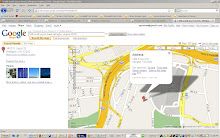





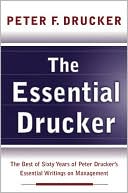

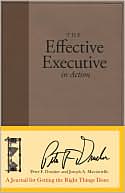
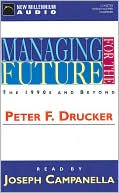
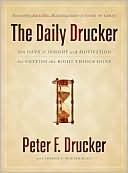
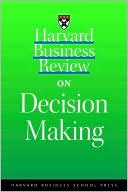
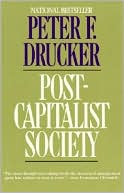

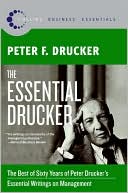
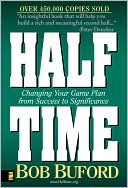
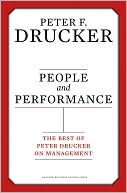
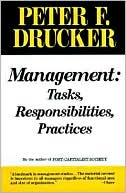


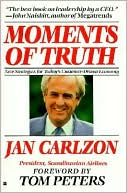
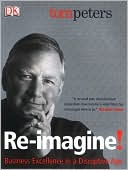

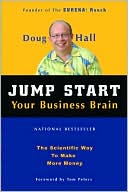
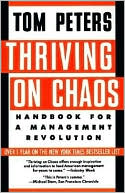

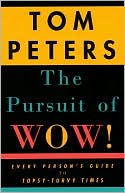
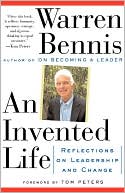













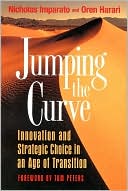
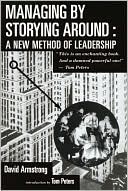

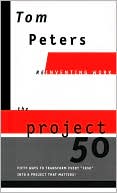
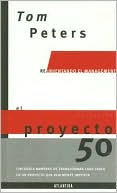
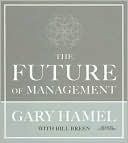


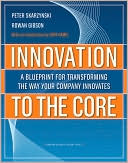
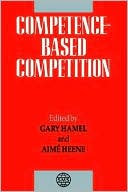
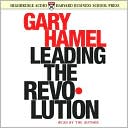

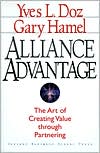






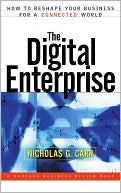

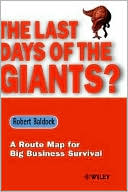

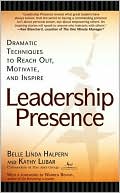
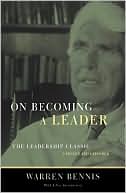

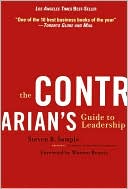



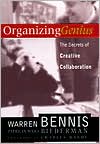

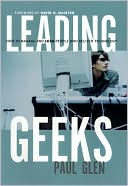
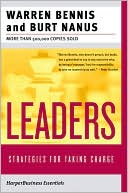

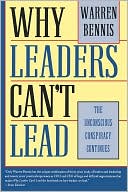
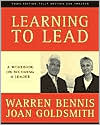
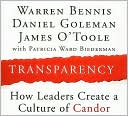

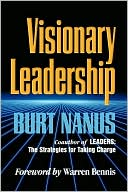
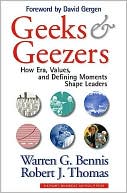

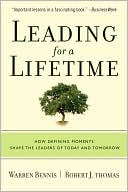




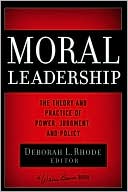
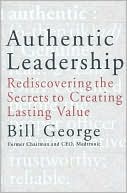


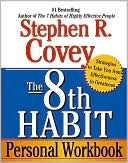
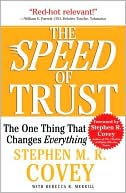
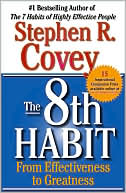
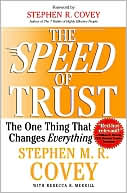
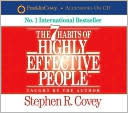
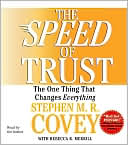

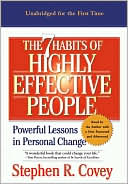
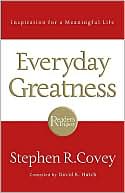





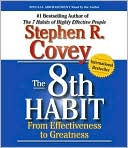

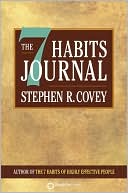
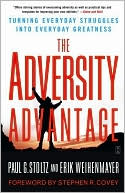




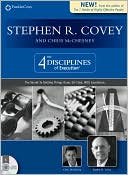


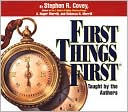
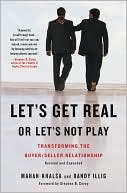
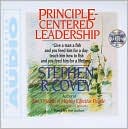






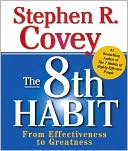


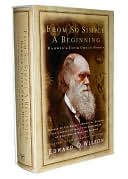
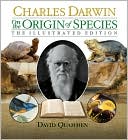
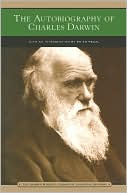
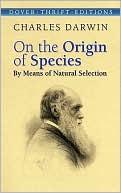


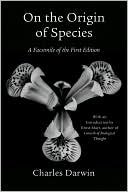




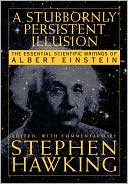


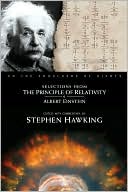

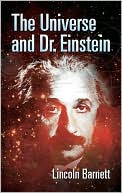












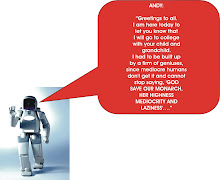
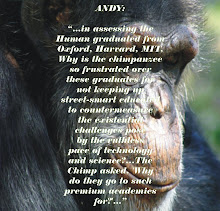


No comments:
Post a Comment